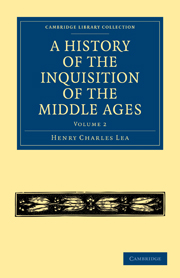CHAPTER VIII - THE HUSSITES
Published online by Cambridge University Press: 29 August 2010
Summary
The Council of Constance, after eighteen months of labor, had disposed of Huss and Jerome. The methods employed had been the only ones known to the Church, the only ones possible to the council. Two centuries earlier the corruptions of the Church were recognized as the cause and excuse of the revolt of the Albigenses and Waldenses, but the revolt was ruthlessly put down without an effective effort to remove the cause. Now again unchecked corruption had produced another revolt and the same policy was followed—to leave untouched the profitable abuses and punish those who refused to tolerate them, and who rejected the principles out of which such abuses inevitably sprang. The council could do no otherwise; the traditions of procedure established in the subjugation of the Albigenses and the succeeding heresies furnished the only precedent and machinery through which it could act. Again a religious revolt had been provoked, and again that revolt was nursed and intensified till its only recognized cure lay in the sword of the crusader.
The prelates and doctors assembled in Constance could not hesitate for a moment as to their duty. Canon law and inquisitorial practice had long established the principle that the only way to meet heresy—and opposition to the constituted authorities of the Church was heresy—was by force, as soon as argument was found ineffective. The disobedient son of the Church who would not submit was to be cast out, after due admonition, and casting out meant that he should have in this world a wholesome foretaste of the wrath to come, in order to serve as an edifying example.
- Type
- Chapter
- Information
- A History of the Inquisition of the Middle Ages , pp. 506 - 568Publisher: Cambridge University PressPrint publication year: 2010First published in: 1888

